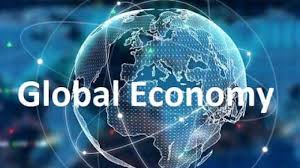Global Economy 2025: Key Challenges Explained in Simple Words
Introduction
The world economy in 2025 is walking a fine line. Some regions are showing growth, while others are slowing down. Rising prices, political conflicts, climate risks, and fast changes in technology are shaping the way countries and businesses move forward. To understand the future, it is important to look closely at the main problems the global economy faces this year.
1. Rising Prices and Uneven Growth
Many countries are still struggling with inflation — the steady rise in prices for daily needs like food, rent, and fuel. At the same time, economic growth is uneven. Some economies are growing, but others are slowing down due to high borrowing costs and weaker trade.
Why this is a problem:
-
Families feel pressure when basic goods become expensive.
-
Businesses spend more on raw materials, which lowers their profits.
-
Governments must act carefully: raising interest rates can control inflation but may slow down jobs and growth.
Simple example: If food prices go up 10%, a family’s monthly budget is stretched, and they may cut down on savings or education expenses.
2. Global Debt Concerns
During past crises, many governments and companies borrowed heavily. Now, in 2025, paying back that debt is becoming harder because interest rates are higher.
Why this is a problem:
-
Countries with heavy debt may cut spending on schools, hospitals, or welfare.
-
Companies under debt pressure may reduce hiring or investment.
-
Financial markets become unstable if too many borrowers struggle to pay.
Simple example: A country that borrowed billions when interest rates were low now faces double repayment costs, forcing it to raise taxes or reduce services.
3. Political Tensions and Trade Barriers
Conflicts and trade disputes are creating uncertainty in global markets. Countries are building new trade rules to protect their own industries, but this makes international trade more costly.
Why this is a problem:
-
Delays and higher tariffs increase the price of everyday goods.
-
Businesses face challenges in sourcing materials.
-
Global investors hesitate when political risks rise.
Simple example: If one country bans exports of vital chips or energy equipment, factories worldwide may slow down production, raising prices for consumers.
4. Climate Change and Energy Pressures
Extreme weather events — floods, storms, droughts, and heatwaves — are becoming more common. At the same time, the transition from fossil fuels to renewable energy is ongoing but expensive.
Why this is a problem:
-
Crops are damaged, causing food shortages and price spikes.
-
Countries dependent on fossil fuels face pressure to change quickly.
-
Energy costs rise if supply is disrupted during the transition.
Simple example: A heatwave can destroy harvests in one region, raising food prices globally and creating shortages in poorer nations.
5. Technology and the Future of Work
Artificial Intelligence (AI) and automation are transforming businesses. While technology creates new opportunities, it also changes or replaces many traditional jobs.
Why this is a problem:
-
Workers without digital skills risk losing jobs.
-
Businesses that fail to adapt may fall behind.
-
Governments must prepare education and training systems to match the new job market.
Simple example: Routine office work, like data entry, is being replaced by AI tools. Employees who upgrade to roles in analysis or digital management remain valuable.
6. Inequality and Social Tensions
The gap between the rich and poor is growing in many places. When a large part of society feels left behind, social unrest and political pressure increase.
Why this is a problem:
-
Inequality reduces overall demand, as many people cannot afford much beyond basic needs.
-
Social tensions make countries unstable, scaring away investment.
-
Governments face protests and must spend more on subsidies.
Simple example: If fuel prices rise but wages remain the same, people protest, and governments are forced to provide costly subsidies.
7. Fragile Supply Chains
Global supply chains remain under pressure due to conflicts, natural disasters, and higher shipping costs. Companies are still trying to reduce their dependence on single suppliers or single countries.
Why this is a problem:
-
A single delay in one port or factory can cause global shortages.
-
Higher costs of transport and raw materials push prices higher for consumers.
-
Small businesses are hit hardest because they lack backup suppliers.
Simple example: If a port closes for just one week due to floods, international shipments get delayed, affecting shops and factories worldwide.
Conclusion
The global economy in 2025 faces real challenges — inflation, debt, trade disputes, climate risks, fast technological change, inequality, and fragile supply chains. These issues are deeply connected. For example, political tensions can raise energy costs, which then increase inflation.
But challenges also bring opportunities. Cleaner energy, smarter technology, and stronger global cooperation can help shape a better future. Countries, companies, and individuals who prepare early — by saving, investing wisely, adopting new skills, and supporting sustainable practices — will be in the best position to succeed.

